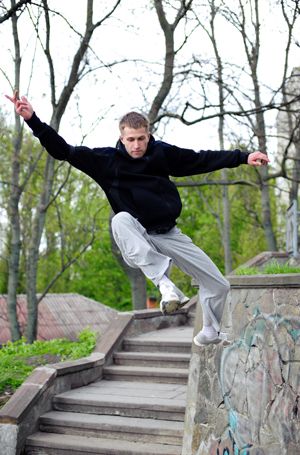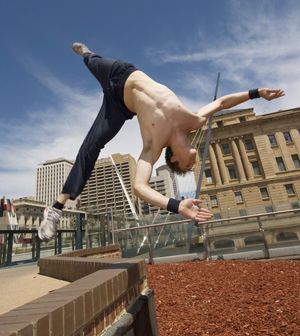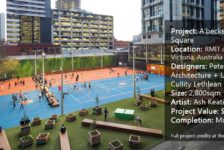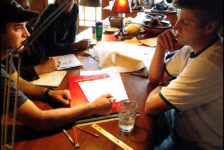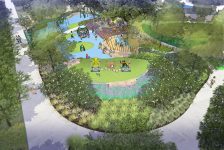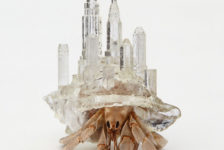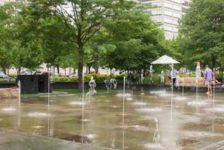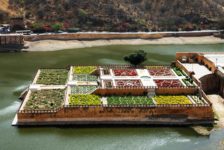We swiftly move on to the second part of our series, this time looking at how to design for free running. If you missed the first part where we explored designing the landscape for calisthenics, let it inspire you! You may have seen a video of a seemingly crazy person looking as light as a feather while jumping and climbing on rooftops and over a series of walls, making you think that person may make an excellent burglar! Those runners aren’t burglars, but neither are they superheroes; they are athletes who have admirably dedicated their time to free running. What is Free Running? Free running was given its name by Sebastian Foucan, who, after learning parkour for many years, began treating the sport/activity as a way of life and philosophy. Free running is a non-competitive, physical discipline of training that teaches runners to move freely over and through any terrain using only the abilities of the body. Movements include running, jumping, climbing and quadrupedal maneuvers while improving functional strength and fitness, balance, spatial awareness, agility, coordination, precision, control and creative vision (flips and tricks) that become a part of the sport. Below: An awesome example of Free Running in action The principle of free running is that each person has his own instinctive approach to different challenges that are unique, artistic and stretch the boundaries of his ability. Overcoming the obstacles faced in a day-to-day set-up within the landscape basically trains the body and mind to be completely functional, effective, liberated and well connected in any environment. So How Can We Design for Free Running?
It is mesmerising to see users who journey through a landscape in a faster speed than you would ever imagine us designing for. So how do we design for those who experience the landscape in a faster and more dynamic way than most human beings? In order to design these spaces, we have to recognize the ways in which a free runner would use the space. We will be using a few of Foucan’s quotes in order to see the world from a free runner’s eyes! It’s All About the Vertical The first thing to remember is that free runners are attracted to anything vertical — you will see many free runners reacting positively to natural barriers such as brick walls or metal fences and, in some instances, even drain pipes! Since walls make natural barriers, a series of spaces could be created within the landscape whereby the interconnecting wall structures allow for the partitioning of the spaces. Such vertical elements could be presented in multiple levels to create more interest and visibility and, of course, make it more challenging for the free runner. In some instances, vertical elements could be a gradient of height changes, like adding a sloping element to the mix. Below: Epic Parkour and Freerunning 2014 Add Detail Changing the materiality of an element can also create small-scale obstacles that challenge a free runner. As Foucan describes: “If it’s just to jump, to perform, you have to be really focused on what you’re going to do, where you’re going to put your step, on your technique also because the surface is completely different. It can be metal, it can be concrete and there are so many elements.” This makes us realize that small changes can have a big impact on the thought process of a free runner. This means we could really have fun playing around with creating and using different surfaces within the landscape that would impact the motion, movement, and interaction. Linking Spaces and Places to a Possible Function “Each time I look at the city, I start to see how functional it can be,” Foucan says. “For a practitioner from parkour to free running, it is important for us to see how functional the environment is. For example, a slope can be something you can slide down and feel your balance. Stairs — you can see how many times you can bounce down them.” Below: Sébastien Foucan Freerunning and interview Here, it’s about having the curiosity and mind-set of a child exploring a space physically: “The physical environment can be your playground.” If we zoom out of the detail and look at the designed landscape, our space on the whole should be able to read as a functional and physically playful place, whether it is the details that interest or the impact of a series of large structures. Make Their Journey Count For a free runner, obstacles evolve organically, because each free runner will make up her own journey and choose her own obstacles as she goes along. There is a huge element of play and creativity involved within the journey, and it teaches those taking part the importance of play, discovery, and safety: “Free running is known as using the environment and expressing yourself, which means you can do anything you feel. It’s part of you. You can do flips, tricks, swing, anything which is creative and feels beautiful,” Foucan says. So design a space that will allow personal expression: The design should not constrict free runners in any way to a particular path or movement. Of course, such a landscape would not only cater to free runners, but also to the greater community. The beauty in designing for both types of users is it allows not only the free runner to express his creativity, but you as the designer to have fun in giving a unique and playful twist to certain details, features, and elements that you add to the site and the way you interconnect all of these things. Below: Incredible examples of Free Runners in action Extreme workouts require more from a person in terms of trusting the body within the landscape as a fluctuating machine of strength and agility. This series of articles allows us to see the landscape as a carpet of opportunities for those who dedicate huge amounts of time to pushing the boundaries of what we see as the limits of our bodies. We hope that the second part has given you more insights on our ever-expanding topics. Don’t miss the next extreme workout design and the final part of our series! See also How to Design a Landscape for Extreme Workouts : Part 1 Calisthenics Recommended reading: The Parkour and Freerunning Handbook by Dan Edwardes Article written by Win Phyo. Published in BlogLogin
Lost Password
Register
If this is your first time on the new site, please click "Forgot your password?". Follow the steps to reset your password. It may be the same as your old one.


